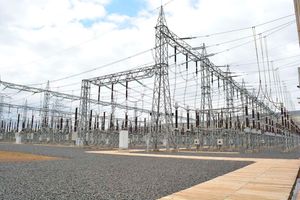Opportunities that El Nino may present

Transporters wade through along Katani Syokimau road which has been impassable for days since Elnino.Besides paying Kshs 600 Per Trip, residents are asking the money meant for Elnino. PHOTO/FILE
What you need to know:
- Predictions from the World Meteorological have indicated a 90 per cent probability of El Niño during the second half of 2023
- Although most of the time El Nino has been associated with destruction, it may also present a good opportunity depending on locations and advance preparations before the onset.
Predictions from the World Meteorological have indicated a 90 per cent probability of El Niño during the second half of 2023. This means that there will be much higher rainfall than the average. According to the organisation, this occurs on average every two to seven years and episodes typically last for between nine to 12 months. It is a naturally occurring climate pattern associated with warming ocean surface temperatures in the central and eastern tropical Pacific Ocean. But it takes place in a climate changed by human activities.
According to the Kenya Meteorological Department, El Niño is expected in the Pacific Ocean. Still, its effect on rainfall patterns in countries such as Kenya also results from the Indian and Atlantic oceans.
Although most of the time El Nino has been associated with destruction, it may also present a good opportunity depending on locations and advance preparations before the onset.
What are the opportunities that El Nino may present?
Afforestation – El Nino could present an opportunity for large-scale afforestation. There will be little need for irrigating the planted trees because of the adequate moisture in the soil. The survival rates for the planted trees will be much higher than at any other time. However, sites should be selected carefully so that the running water does not wash away the seedlings.
Water harvesting: El Nino is associated with higher than normal rainfall than the average. This means there will be much more runoff on the ground. This is critical, especially in Arid and Semi-Arid Lands, which experience long periods of water scarcity. Water harvesting tools such as roof catchment tanks, sand dams, large capacity dams and water pans can be put up to ensure that maximum amounts of this water is harvested.
Landscape regeneration through pasture reseeding: This is the introduction of grass, legume or other selected seeds to replenish depleted soil seed banks while providing forage for livestock. It’s critical, especially in rangelands, where most of the livestock are kept. Open-pollinated varieties of perennial grasses such as Cenchrus ciliaris or Chloris gayana are mostly suited in these regions. For example, during stressful drought conditions, the seeds will usually become dormant and then germinate in the presence of moisture. It is time for such reseeding, and the El Nino will trigger germination and overall regeneration. However, it is also important to consider planting sites carefully to prevent the seeds from being washed away.
Increased agriculture production: Some technologies can effectively produce more crops such as vegetables, even in the presence of threatening El Nino. Agroecological technologies such as raised gardens, cone gardens and sack mount gardens can be placed strategically as long as they are not along the waterway. Irrigation will not be required and they will retain enough moisture. Vegetable production can be doubled through these technologies, especially if they are protected by materials such as shade nets.
Whether these benefits will be maximised depends on one main factor – preparation. This requires partnerships, collaborations and coordination between communities, other actors and government. How are you preparing?
Sikuku is the regional sustainable agriculture coordinator at Ripple Effect


